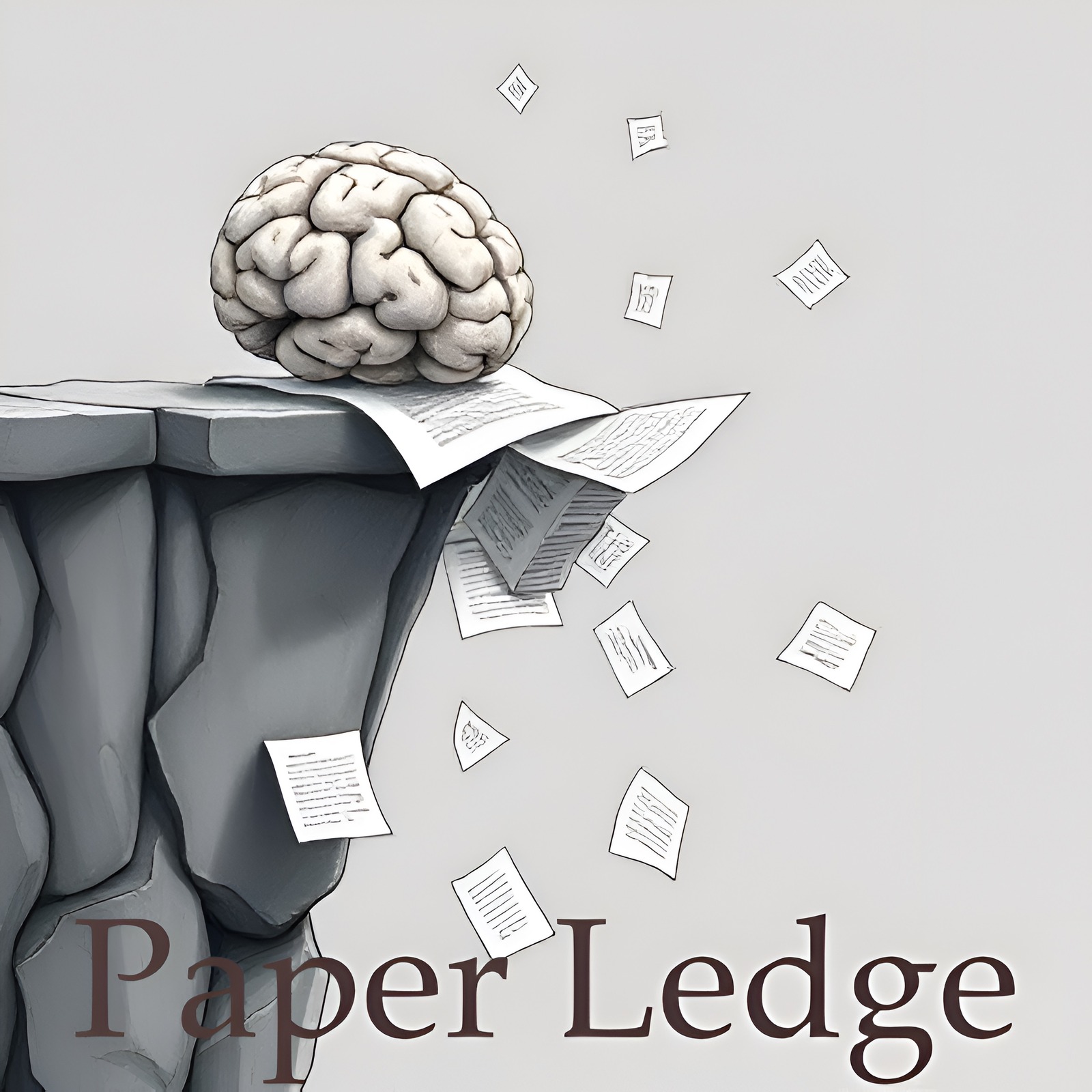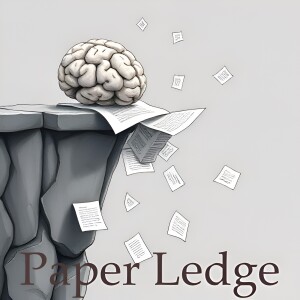PaperLedge

PaperLedge where research meets storytelling is a revolutionary podcast where cutting-edge research meets AI-powered storytelling. Hosted by the Ernis, whose blend of gentle reassurance, cosmic wonder, explanatory clarity, and enthusiastic charm makes complex research accessible to everyone. Each episode, Ernis transforms the latest academic papers into engaging, jargon-free audio experiences that deliver key insights in digestible formats. Whether you’re a researcher seeking interdisciplinary perspectives, a student supplementing your studies, or simply curious about scientific breakthroughs, PaperLedge has something for you.
Episodes
Episodes



Wednesday Jun 11, 2025
Wednesday Jun 11, 2025
Hey Learning Crew, Ernis here, ready to dive into some seriously cool research that might just change how we think about AI collaboration!
Today, we're unpacking a paper that tackles a big challenge: getting Large Language Models (LLMs) – think super-smart AIs like GPT – to work together effectively. Imagine you have a complex project, like planning a surprise party. You wouldn't just give all the tasks to one person, right? You'd create teams, each focused on a specific area – decorations, catering, entertainment. That's the idea behind this paper, but instead of humans, we're talking about AI agents.
The problem is, current approaches to multi-agent collaboration are often... well, a bit clunky. They rely on pre-set teams and rigid structures. It's like having a party planning team that's always organized the same way, even if the party is a completely different type of event. That's where the Agentic Neural Network (ANN) comes in.
Think of ANN as a brain – specifically, a neural network – for AI agents. It's inspired by how our own brains work, with layers of interconnected nodes. In this case, each node is an AI agent, and each layer is a team working on a specific subtask. The coolest part? The teams aren't pre-defined; they're dynamically created based on the task at hand. It's like having a party planning team that can reshuffle and reorganize itself on the fly, adapting to the unique needs of each event.
Here's how it works in a nutshell:
Forward Phase: Just like a neural network processes information, ANN decomposes the task into smaller subtasks and builds agent teams layer by layer. It figures out which agents are best suited for which subtasks and how they should work together.
Backward Phase: This is where the magic happens. ANN uses a process similar to backpropagation – the way neural networks learn – to refine the collaboration. It gives feedback to the agents, allowing them to improve their roles, prompts (the instructions they receive), and coordination.
It's like the party planning team getting feedback after each event, learning what worked and what didn't, and adjusting their strategies for the next party. This allows the agents to evolve and specialize over time.
"This neuro-symbolic approach enables ANN to create new or specialized agent teams post-training, delivering notable gains in accuracy and adaptability."
So, why is this a big deal? Well, ANN offers several key advantages:
Adaptability: It can handle a wide range of tasks without needing to be re-engineered for each one.
Scalability: It can work with a large number of agents, making it suitable for complex problems.
Efficiency: It combines the collaborative power of LLMs with the efficiency and flexibility of neural networks.
The researchers tested ANN on four different datasets and found that it consistently outperformed other multi-agent systems. This suggests that ANN is a promising framework for building more intelligent and collaborative AI systems.
Why should you care? If you're in AI research, this could be a game-changer for building more effective multi-agent systems. If you're in business, imagine using ANN to automate complex tasks, like supply chain management or customer service. And if you're just a curious learner, this is a fascinating glimpse into the future of AI collaboration.
The team plans to open-source the entire framework, which is fantastic news for the research community!
Now, some food for thought:
How might ANN be used to address some of the world's most pressing challenges, such as climate change or disease prevention?
What are the ethical considerations of creating AI systems that can dynamically reorganize themselves and evolve their roles? Could this lead to unintended consequences?
That's all for today, Learning Crew! Let me know your thoughts on ANN in the comments. Until next time, keep learning and keep exploring!Credit to Paper authors: Xiaowen Ma, Chenyang Lin, Yao Zhang, Volker Tresp, Yunpu Ma



Wednesday Jun 11, 2025
Wednesday Jun 11, 2025
Hey PaperLedge learning crew, Ernis here! Get ready for another deep dive, because today we're tackling some cutting-edge research that's trying to make robots work together much better. Think of it like this: imagine trying to coordinate a group of friends to move furniture into a new apartment. It's chaotic, right? Someone's always bumping into something, or you're all trying to squeeze through the same doorway at once. That's essentially the problem AI researchers are facing when they try to get multiple robots to cooperate in a dynamic environment.
The paper we're unpacking is all about improving how robots can cooperate and get things done when they're relying on what they "see". It's titled something technical, but the core idea is about building a better playground – a benchmark – for testing these collaborative robot systems. This benchmark is called VIKI-Bench.
"VIKI-Bench and VIKI-R offer a unified testbed and method for advancing multi-agent, visual-driven cooperation in embodied AI systems."
Now, why is this important? Well, previously, a lot of the focus was on using big language models (like the ones that power chatbots) to tell robots what to do. And some initial research has looked into using vision-language models, which combine language understanding with the ability to "see" and interpret images. However, these vision-based approaches haven't been great at handling different types of robots – imagine trying to use the same instructions for a tiny drone and a massive forklift! VIKI-Bench changes that.
VIKI-Bench is like a super-structured obstacle course designed specifically to test how well robots can cooperate visually. It has three levels:
Agent Activation: Figuring out which robot should do what and when. Think of it as assigning roles in our furniture-moving scenario.
Task Planning: What steps does each robot need to take to complete their assigned task? It's the robot figuring out the best route to carry that sofa.
Trajectory Perception: How does each robot see the environment and adjust its path to avoid obstacles and work with the other robots? This is about not banging into walls or each other!
The coolest part? VIKI-Bench uses different kinds of robots and provides them with multiple viewpoints – like having cameras all over the apartment. This gives researchers a much more realistic and challenging environment to work with.
To show off how useful VIKI-Bench is, the researchers also developed a new method called VIKI-R. It's a two-step process:
First, they teach a vision-language model using examples of successful robot cooperation. It's like showing the robots videos of expert furniture movers! They also use something called "Chain-of-Thought" annotations, which basically means explaining the reasoning behind each action step-by-step.
Second, they use reinforcement learning – essentially rewarding the robots for good behavior – to fine-tune their cooperation skills. It's like giving the furniture movers a pizza party after they successfully move everything in!
And guess what? VIKI-R significantly outperformed other methods in the benchmark. The robots became much better at working together, even when they were different types of robots!
So, why should you care about this research?
For AI enthusiasts: This is a big step towards building more sophisticated and adaptable robot teams.
For robotics engineers: VIKI-Bench provides a valuable tool for testing and improving your own multi-agent systems.
For everyone else: Imagine a future where robots can seamlessly cooperate to perform complex tasks in factories, hospitals, or even your own home. This research is helping to make that future a reality.
Here are a few questions that popped into my head:
How easily could VIKI-R be adapted to real-world scenarios where the environment isn't as structured as the benchmark?
What are the ethical implications of having highly coordinated robot teams? Could this lead to job displacement or other unforeseen consequences?
That's all for today's episode. Until next time, keep those learning gears turning!Credit to Paper authors: Li Kang, Xiufeng Song, Heng Zhou, Yiran Qin, Jie Yang, Xiaohong Liu, Philip Torr, Lei Bai, Zhenfei Yin



Tuesday Jun 10, 2025
Tuesday Jun 10, 2025
Alright learning crew, Ernis here, ready to dive into some fascinating research! Today, we're tackling a paper about keeping those brainy AI language models, like the ones powering your chatbots or writing assistants, up-to-date without messing them up. Think of it like this: imagine you're constantly adding new recipes to your Grandma's cookbook. You want to add the new ones, but you don't want to accidentally rewrite her famous apple pie recipe!
That's the problem these researchers are trying to solve. Language models are trained on massive amounts of data, but the world keeps changing. New information emerges, mistakes are found, and we need to update them without retraining the entire model from scratch – which would be super expensive and time-consuming.
The current ways of doing this model updating have issues. Some approaches make the model forget things it already knew, like accidentally deleting a chapter from Grandma’s cookbook. Others struggle to adapt the updated information to slightly different wordings or situations. It's like Grandma only understanding the recipe when you say, "Mix flour and sugar," but not when you say, "Combine the dry ingredients."
So, what's the solution? This paper introduces something called MEMOIR. Think of MEMOIR as adding a special "post-it note" section to the language model's brain. This "post-it note" section is a separate part of the model dedicated to storing these updates, like new recipes. The clever part is how it keeps those "post-it notes" organized.
Think of it like a well-organized filing cabinet. Each "post-it note" (edit) gets filed away in a specific folder.
It uses special "masks" (think of sticky tabs) to only activate the relevant information. So, when you ask a question, only the "post-it notes" related to that question light up.
Here’s the key: MEMOIR uses a technique called sparsification. That sounds complicated, but it just means that when an update is added, it only affects a tiny, specific part of the "post-it note" section. This minimizes the chance of accidentally messing with other updates or the original knowledge of the model.
"By sparsifying input activations... MEMOIR confines each edit to a distinct subset of the memory parameters, minimizing interference among edits."
Now, when you ask the updated language model a question, it compares the "activation pattern" of your question to the patterns stored with each "post-it note." If there's a match, it activates the relevant "post-it notes" and uses that new information to answer your question. If not, it relies on its original knowledge.
The researchers tested MEMOIR on some big language models like LLaMA-3 and Mistral, using tasks like answering questions, correcting AI "hallucinations" (where the AI makes stuff up), and dealing with information presented in new ways. The results were impressive! MEMOIR was better than existing methods at:
Reliability: Remembering the updates correctly.
Generalization: Applying the updates to slightly different questions.
Locality: Not messing up other parts of the model's knowledge.
And it could handle thousands of updates without significant forgetting!
So, why does this matter to you?
For developers: This could lead to more reliable and adaptable AI systems.
For users: This could mean more accurate and helpful chatbots, search engines, and other AI-powered tools.
For everyone: It helps ensure that AI stays current and adapts to our ever-changing world.
This research is a significant step towards creating AI that can learn and adapt continuously without losing its marbles! It's like giving Grandma a better way to manage her cookbook – ensuring she can keep adding delicious new recipes while still baking that perfect apple pie.
Now, a couple of questions popped into my head:
Could MEMOIR be used to personalize language models for individual users, tailoring them to their specific needs and interests?
What are the potential downsides of adding too many "post-it notes"? Could the system eventually become cluttered and less efficient?
What do you think, learning crew? Let me know your thoughts!Credit to Paper authors: Ke Wang, Yiming Qin, Nikolaos Dimitriadis, Alessandro Favero, Pascal Frossard



Tuesday Jun 10, 2025
Tuesday Jun 10, 2025
Hey PaperLedge crew, Ernis here, ready to dive into some seriously cool research that's going to make you wanna move! We're talking about AI that can generate dance moves based on music.
Now, I know what you're thinking: AI dancing? Sounds like something out of a sci-fi movie! And you're not wrong, but it's also a rapidly developing field. The big challenge has always been teaching AI to understand the nuances of music and translate that into believable, expressive movement.
Think of it like this: imagine trying to teach someone who's never seen dancing before how to groove to different genres. You'd need to show them tons of examples, explain the feeling behind the music, and maybe even give them some pointers on where to put their arms and legs. That's essentially what researchers are trying to do with AI.
The problem is, getting enough detailed information to train these AI dance machines has been tough. Previous attempts have been limited by a lack of high-quality data. And that's where this new research comes in.
These researchers have created something called OpenDance5D. It’s a massive, and I mean massive, dataset of human dance – over 101 hours of it! And it's not just any old dance footage. It includes:
Video: Actual recordings of people dancing.
Audio: The music they're dancing to.
2D Keypoints: Think of these as dots on the dancer's body that track their movements in two dimensions – like a stick figure version of the dance.
3D Motion: Even more detailed information about how the dancer is moving in three-dimensional space.
Text Descriptions: And here's the really cool part: detailed written descriptions of the dances, crafted by humans. Think things like "energetic hip-hop with sharp, staccato movements" or "fluid ballet with graceful arm extensions".
Basically, they've created a super-detailed encyclopedia of dance, covering 14 different genres!
"OpenDance5D provides a comprehensive foundation for cross-modal learning, paving the way for more realistic and controllable AI dance generation."
But they didn't stop there! They also created OpenDanceNet, which is the AI model that uses this data to generate new dance moves. The really impressive thing about OpenDanceNet is that it can be controlled in multiple ways.
Imagine you're a choreographer. With OpenDanceNet, you could:
Give it a piece of music and ask it to generate a dance to match.
Tell it you want a dance that's "aggressive and robotic" or "romantic and flowing".
Specify the starting position of the dancer.
Even provide it with keyframe poses you want the dancer to hit.
It's like having an AI dance partner that can adapt to your every whim!
The research shows that OpenDanceNet can create dances that are both realistic and highly customizable. This opens up a ton of possibilities for:
Game Developers: Creating realistic animations for in-game characters.
Virtual Reality Experiences: Immersing users in interactive dance environments.
Music Video Production: Generating unique and eye-catching dance sequences.
Dance Education: Providing students with personalized training and feedback.
So, why does this research matter to you, the PaperLedge listener?
For the creatives: This could be a powerful new tool for exploring dance and music in innovative ways.
For the tech enthusiasts: It's a fascinating example of how AI can be used to understand and generate complex human movements.
For everyone: It shows how AI can be used to enhance our creativity and express ourselves in new and exciting ways.
Now, a couple of things that popped into my head while reading this:
How long before we see AI choreographers challenging human choreographers? Could AI ever truly capture the emotional depth and storytelling of human-created dance?
What are the ethical implications of using AI to generate dance? Could it lead to cultural appropriation or the homogenization of dance styles?
These are just a few of the questions that this research raises. It's a really exciting area, and I can't wait to see what the future holds for AI-powered dance! What do you think, PaperLedge crew? Let me know your thoughts!Credit to Paper authors: Jinlu Zhang, Zixi Kang, Yizhou Wang



Tuesday Jun 10, 2025
Tuesday Jun 10, 2025
Hey PaperLedge learning crew, Ernis here, ready to dive into some cutting-edge research! Today, we're tackling a paper about predicting the future... in hospitals. Think of it like this: doctors constantly monitor patients – heart rate, blood pressure, oxygen levels – all changing over time. These are medical time series, and they're packed with vital information.
Now, imagine you want to predict if a patient's condition will worsen, or how they'll respond to a treatment. Traditionally, you'd need a specific AI model trained on data just like that patient's. But what if you don't have enough data, or the data is from a different hospital with slightly different monitoring systems? This is where things get tricky.
That's where this paper comes in. The researchers introduce MIRA, a "foundation model" specifically designed for medical time series forecasting. What's a foundation model? Think of it like a super-smart AI that's been trained on a massive amount of general knowledge. It's like teaching a kid the basics of math and science before they specialize in engineering or medicine.
The problem is, existing foundation models aren't great with medical time series. Why? Because medical data is messy! It's got:
Irregular Intervals: Sometimes measurements are taken every minute, sometimes every hour, sometimes they're missing altogether. It's like trying to follow a recipe when someone keeps changing the timing on you.
Heterogeneous Sampling Rates: Different vital signs are measured at different frequencies. Blood pressure might be checked more often than cholesterol.
Frequent Missing Values: Machines break, patients move, data gets lost. It's a fact of life in healthcare.
MIRA tackles these challenges with some clever innovations. One is called "Continuous-Time Rotary Positional Encoding." I know, it sounds like something out of Star Trek, but it basically allows MIRA to understand the exact timing of each measurement, even if they're irregular. Think of it like understanding the nuances of a musical score, even if the tempo keeps changing.
Another innovation is a "frequency-specific mixture-of-experts layer." This helps MIRA focus on the right signals at the right time. Imagine listening to a symphony – you need to be able to distinguish the violins from the trumpets to really appreciate the music.
Finally, MIRA uses a "Continuous Dynamics Extrapolation Block" based on something called a Neural ODE. This allows MIRA to essentially guess what's happening between the measured data points, creating a smooth, continuous picture of the patient's condition. It's like filling in the gaps in a connect-the-dots picture to reveal the hidden image.
So, how well does MIRA work? The researchers trained it on a HUGE dataset – over 454 billion time points from publicly available data. And the results are impressive! MIRA reduced forecasting errors by an average of 10% compared to other methods when tested on data it hadn't seen before (out-of-distribution) and 7% on data it had seen before (in-distribution). That's a big deal in a clinical setting!
"MIRA achieves reductions in forecasting errors by an average of 10% and 7% in out-of-distribution and in-distribution scenarios, respectively, when compared to other zero-shot and fine-tuned baselines."
They also created a benchmark to help other researchers in this field. Think of it as a standardized test for medical time series models.
Why does this matter?
For Doctors: MIRA could help them make more accurate diagnoses and treatment decisions, leading to better patient outcomes.
For Hospitals: It could reduce the need for expensive, customized AI models, making advanced healthcare more accessible.
For Researchers: It provides a solid foundation for future research in medical time series modeling.
For Patients: Ultimately, this research aims to improve patient care and potentially save lives.
So, let's ponder this a bit:
Could MIRA be adapted to predict other types of time series data, like financial markets or climate change?
How do we ensure that MIRA is used ethically and doesn't perpetuate existing biases in healthcare?
What are the potential privacy implications of using such a powerful AI model on sensitive patient data?
That's all for today's deep dive, learning crew. Until next time, keep those neurons firing!Credit to Paper authors: Hao Li, Bowen Deng, Chang Xu, Zhiyuan Feng, Viktor Schlegel, Yu-Hao Huang, Yizheng Sun, Jingyuan Sun, Kailai Yang, Yiyao Yu, Jiang Bian



Tuesday Jun 10, 2025
Computer Vision - EgoM2P Egocentric Multimodal Multitask Pretraining
Tuesday Jun 10, 2025
Tuesday Jun 10, 2025
Alright learning crew, Ernis here, ready to dive into some mind-blowing research that’s going to change how our devices see the world through our eyes! We're talking about "EgoM2P: Learning Temporally Aware Multimodal Tokens for Egocentric 4D Perception," and trust me, it's cooler than it sounds.
Imagine this: You're wearing smart glasses, right? They're not just showing you information, they're understanding what you're looking at, what you're doing, and the world around you. That's egocentric vision – seeing the world from the wearer's perspective, like a built-in superpower for your devices.
Now, making that happen is super tricky. Think about all the different inputs: the video from the camera, the depth of objects, where your head is pointing, and even where your eyes are looking. All of that info is called "multimodal data," and it's like trying to conduct an orchestra with a thousand different instruments, some of which are missing or out of tune!
That's the challenge this paper tackles. You see, getting all this data perfectly synchronized and complete is nearly impossible in the real world. Sometimes the glasses don't have gaze tracking, sometimes the lighting messes up the depth sensor. So, how do you teach a computer to understand what's going on when it's missing pieces of the puzzle?
That's where EgoM2P comes in. It's a clever system that learns to fill in the blanks and understand the connections between all these different data streams. The researchers came up with a new approach with efficient temporal tokenizers, that's like giving the computer super-powered note-taking skills, letting it focus on the most important moments and relationships within the data.
Think of it like this: imagine you're watching a movie, but some scenes are missing. A good storyteller can still piece together what probably happened, right? EgoM2P does something similar, using the available data to infer what's missing and understand the overall story of what the wearer is seeing and doing.
This is really powerful because it allows the system to do all sorts of amazing things, like:
Predict where the wearer is looking (gaze prediction)
Figure out exactly how the camera is moving through the world (camera tracking)
Estimate the depth of objects in the scene, even with just a single camera (monocular depth estimation)
But the real kicker is that EgoM2P isn't just good at understanding what's happening; it can even imagine what might happen next! It can generate videos of what the wearer might see, based on the current situation. That's like having a crystal ball for your smart glasses!
"EgoM2P matches or outperforms specialist models while being an order of magnitude faster."
And the best part? It does all of this way faster than previous methods. The researchers are even open-sourcing EgoM2P, meaning anyone can use and build upon their work. That's a huge win for the whole field!
So, why should you care about all this?
For the AR/VR Enthusiasts: This is the technology that will make augmented and virtual reality feel more natural and intuitive. Imagine AR apps that perfectly understand your gaze or VR experiences that adapt to your every movement.
For the Robotics Folks: This could help robots understand human actions and intentions, making them better collaborators in warehouses, factories, or even your home!
For the HCI Designers: EgoM2P enables the development of more responsive and personalized human-computer interfaces.
For the Tech Curious: It's a fascinating glimpse into the future of how computers will see and understand the world, not just through their own cameras, but through our eyes.
Here are some questions that popped into my head while reading this paper:
How might EgoM2P be used to help people with visual impairments navigate the world more safely?
What are the ethical implications of having devices that can constantly track our gaze and predict our actions?
Could EgoM2P be adapted to understand other sensory inputs, like audio or tactile data?
I'm so excited to see where this research leads us! Stay curious, learning crew!Credit to Paper authors: Gen Li, Yutong Chen, Yiqian Wu, Kaifeng Zhao, Marc Pollefeys, Siyu Tang



Tuesday Jun 10, 2025
Tuesday Jun 10, 2025
Hey PaperLedge crew, Ernis here, ready to dive into some fascinating chemistry research! Today, we're tackling a paper about how to make AI better at understanding and working with chemistry. Think of it like this: you give a super-smart student (our AI) access to a massive chemistry textbook, a calculator, and a bunch of specialized lab equipment. But the student doesn't automatically know when to use which tool or how to use it correctly. That's where this research comes in.
The core problem these researchers are trying to solve is that large language models (LLMs), like the ones that power chatbots, are getting pretty good at some chemistry tasks, but they still struggle. Why? Well, a lot of their knowledge is outdated, and it's hard to teach them the really specialized stuff chemists use every day. It's like trying to teach someone how to bake a cake using only recipes from the 1800s – you might get something edible, but it won't be as good as a modern cake!
To fix this, the researchers built an LLM-based "chemistry agent." Think of it as giving that smart student a super-organized toolbox. This toolbox contains 137 different chemical tools – everything from simple databases to complex reaction prediction software. It's a massive upgrade!
Basic Tools: Imagine quick look-ups for chemical properties, like finding the boiling point of water.
Advanced Tools: These are like complex simulators that can predict how chemicals will react together.
But just having the tools isn't enough. The AI needs to know when to use each one and how to use it effectively. So, the researchers also created something called ChemToolBench. This is a special dataset designed to train the AI on how to select the right tool for the job and how to fill in the correct parameters. It's like giving the student a detailed instruction manual for each tool in the toolbox.
"The goal is to create an AI chemist that can not only answer questions but also design new molecules and reactions."
Now, here's where it gets really clever. The researchers developed a new method called Hierarchical Evolutionary Monte Carlo Tree Search (HE-MCTS). Don't let the fancy name scare you! Think of it as a super-efficient way for the AI to plan its strategy. It breaks down the problem into smaller steps and explores different combinations of tools to find the best solution. It's like planning a road trip – you need to decide where to go, which roads to take, and what stops to make along the way. HE-MCTS helps the AI make those decisions in the most efficient way possible.
They used a technique called step-level fine-tuning (FT), which essentially means they trained the AI on each individual step of the process. This allowed them to optimize the AI's policy, helping it make better decisions about which tools to use and how to use them. The result? The AI was able to outperform even GPT-4o in chemistry tasks!
So, what does all this mean for us? Well, it has implications for:
Chemists: This could lead to AI assistants that can help them design new molecules, predict reaction outcomes, and accelerate the pace of discovery.
Drug Discovery: Imagine AI that can automatically screen millions of compounds to find potential drug candidates.
Materials Science: This could help us design new materials with specific properties, like stronger plastics or more efficient solar panels.
The researchers tested their approach on Chemistry QA and discovery tasks, and the results were impressive. They showed that their method significantly improved performance. This means we're one step closer to having AI that can truly assist us in solving complex chemical problems.
They've even made all the datasets and code available on GitHub, so other researchers can build upon their work. Talk about collaboration!
This research is a great example of how we can combine the power of LLMs with specialized knowledge to create AI systems that are truly useful. It's not just about building smarter AI; it's about building AI that can help us solve real-world problems. It's a big step towards AI that understands chemistry deeply enough to assist us in creating new medicines, materials, and technologies.
Now, some things that come to mind are:
How easily can new chemical tools be integrated into this system? Is it a plug-and-play situation, or does it require significant modification?
What are the limitations of this approach? Are there certain types of chemical problems that it still struggles with?
Could this approach be adapted to other scientific domains, like biology or physics?
That's all for this episode. Until next time, keep exploring and keep learning! Credit to Paper authors: Mengsong Wu, YaFei Wang, Yidong Ming, Yuqi An, Yuwei Wan, Wenliang Chen, Binbin Lin, Yuqiang Li, Tong Xie, Dongzhan Zhou



Monday Jun 09, 2025
Monday Jun 09, 2025
Hey PaperLedge crew, Ernis here! Get ready to dive into something completely different today. We're talking puzzles, but not your grandma's jigsaw puzzles. We're talking about puzzlehunts – those brain-bending, multi-layered challenges that require you to think way outside the box.
Think of it like this: imagine you're a detective trying to solve a mystery. You don't get a neat instruction manual. Instead, you have to piece together clues from different sources, connect the dots, and figure out what the actual question is before you can even attempt an answer. That's the spirit of a puzzlehunt!
Now, why are we talking about puzzles on a show about academic research? Well, a group of researchers at MIT decided to use puzzlehunts as a way to test how smart our fancy AI models really are. See, most AI benchmarks are super structured, like standardized tests with clear questions and answers. But the real world isn't like that, is it? Real-world problems are messy, ambiguous, and require creative thinking. Things like:
Scientific discovery
Exploratory data analysis
Investigative problem-solving
...all mirror the kind of reasoning you need for a good puzzlehunt!
So, these researchers created something called PuzzleWorld, a massive collection of 667 puzzlehunt-style problems. It's designed to push AI to its limits, forcing it to reason step-by-step, think creatively, and use information from different sources – text, images, maybe even sounds!
Think of PuzzleWorld as an obstacle course for AI, designed to see if it can handle the kind of open-ended challenges we face every day.
Here's the kicker: these puzzles aren't just given to the AI. Each puzzle has detailed reasoning traces, which are like the detective's notes on how they solved the case. And there are labels that say what kind of thinking skills were used to solve each puzzle. So, they can really see where the AI's strong, and where it's weak.
The results? Well, let's just say our AI overlords aren't quite ready to take over the world of puzzlehunts. Most of the advanced AI models they tested only solved 1-2% of the puzzles entirely! The best one did a bit better, but even it only cracked 14% of the puzzles. They found that AI was only correct on the individual reasoning steps about 40% of the time.
But here's where it gets interesting. The researchers tried training a smaller AI model on those detailed reasoning traces, those detective notes. And guess what? The AI's ability to solve the puzzle step-by-step improved dramatically, from 4% to 11%! However, if they just trained the AI on the final answers, the AI performed even worse than before! This highlights the importance of understanding the process of reasoning, not just the outcome.
So, what's holding these AI models back? The researchers found a few key issues:
Myopic Reasoning: They tend to focus on the immediate step without seeing the bigger picture. It's like getting lost in the weeds and forgetting what you're searching for.
Language Bottleneck: They struggle to go beyond simple language-based inferences.
Lack of Sketching: They can't visualize and sketch solutions, which is often crucial for spatial and visual puzzles.
Why does all this matter? Well, it shows us that while AI has made huge strides, it still has a long way to go when it comes to truly creative and open-ended reasoning. This research helps us understand the limitations of current AI and points the way toward building more robust and adaptable systems.
For researchers, PuzzleWorld provides a valuable benchmark and dataset for training and evaluating new AI models. For educators, it offers insights into the cognitive skills that are essential for problem-solving. And for everyone else, it's a reminder that human creativity and critical thinking are still incredibly valuable in a world increasingly dominated by AI.
So, that's PuzzleWorld! Now, a couple of things I'm pondering:
If AI struggles with open-ended puzzles, what does that say about its ability to handle real-world crises that require innovative solutions?
Could incorporating more "human-like" cognitive biases, like intuition and educated guesses, actually improve AI's problem-solving abilities in these kinds of scenarios?
Let me know what you think, learning crew! And as always, you can find the link to the paper in the show notes. Until next time, keep those gears turning!Credit to Paper authors: Hengzhi Li, Brendon Jiang, Alexander Naehu, Regan Song, Justin Zhang, Megan Tjandrasuwita, Chanakya Ekbote, Steven-Shine Chen, Adithya Balachandran, Wei Dai, Rebecca Chang, Paul Pu Liang







